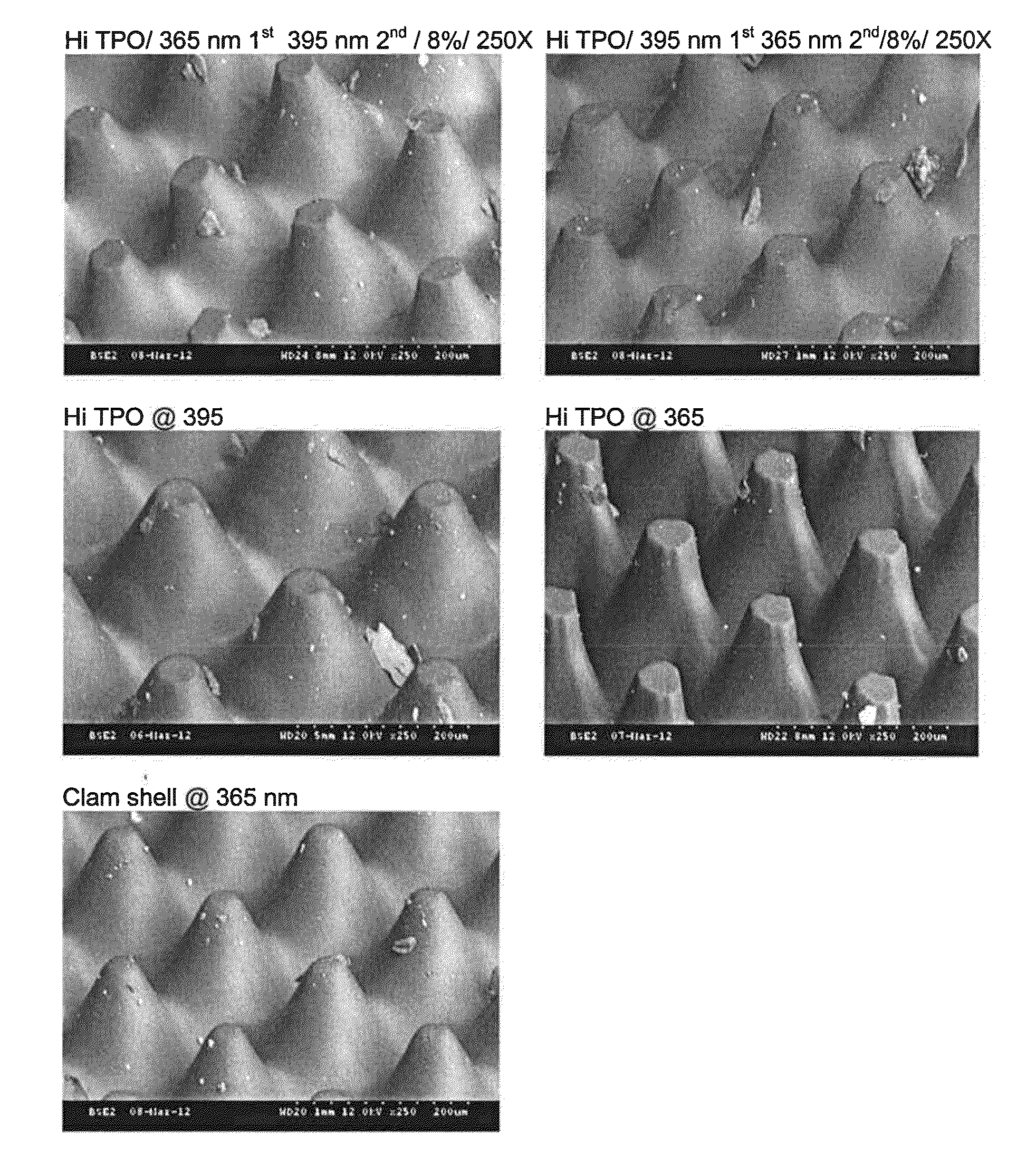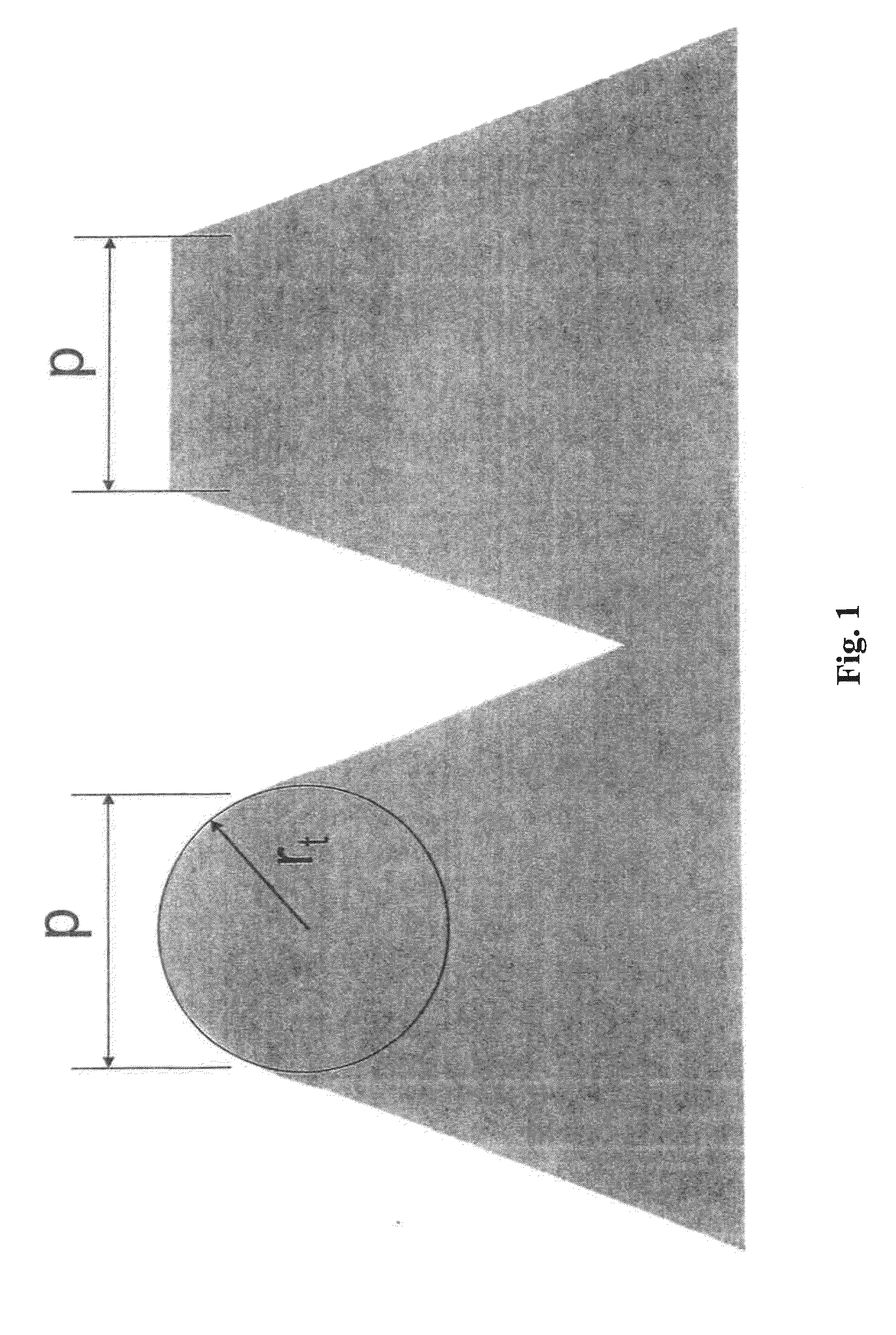Method of Improving Print Performance in Flexographic Printing Plates
a technology of flexographic printing plate and print performance, which is applied in the direction of photomechanical equipment, photosensitive material processing, instruments, etc., can solve the problems of easy damage to the press, difficult to maintain small dots on flexographic plates, and difficult to print small graphic elements such as fine dots, lines and even tex
- Summary
- Abstract
- Description
- Claims
- Application Information
AI Technical Summary
Benefits of technology
Problems solved by technology
Method used
Image
Examples
example i
[0069]A study was performed to evaluate photocurable compositions containing a variety of photoinitiators to study how each interacted with two wavelengths (365 nm and 395 nm) light sources. Surprisingly, it was found that both the 395 nm and 365 nm light sources produced medium to broad dots.
[0070]Three UV LED assembly units available from UV Process Supply, Inc, and having wavelengths of 365 nm, 395 nm and 415 nm, each having an intensity of about 10 to 30 mW were tested. In addition, a unit available from Digital Light Labs, Inc., having a wavelength of 365 nm and an intensity of about 175 mW as also tested.
[0071]Various formulations of photocurable sheet polymer printing plate blanks were prepared using photoinitiators having a peak around 365 nm. One example of a suitable photoinitiator is 2,2-dimethyoxy-1,2-di(phenyl)ethanone available from Ciba Specialty Chemicals, Inc. under the tradename Irgacure 651.
[0072]The UV-Vis spectra of Irgacure 651 at three increasing concentration...
PUM
| Property | Measurement | Unit |
|---|---|---|
| wavelengths | aaaaa | aaaaa |
| wavelengths | aaaaa | aaaaa |
| wavelengths | aaaaa | aaaaa |
Abstract
Description
Claims
Application Information
 Login to View More
Login to View More - R&D
- Intellectual Property
- Life Sciences
- Materials
- Tech Scout
- Unparalleled Data Quality
- Higher Quality Content
- 60% Fewer Hallucinations
Browse by: Latest US Patents, China's latest patents, Technical Efficacy Thesaurus, Application Domain, Technology Topic, Popular Technical Reports.
© 2025 PatSnap. All rights reserved.Legal|Privacy policy|Modern Slavery Act Transparency Statement|Sitemap|About US| Contact US: help@patsnap.com



